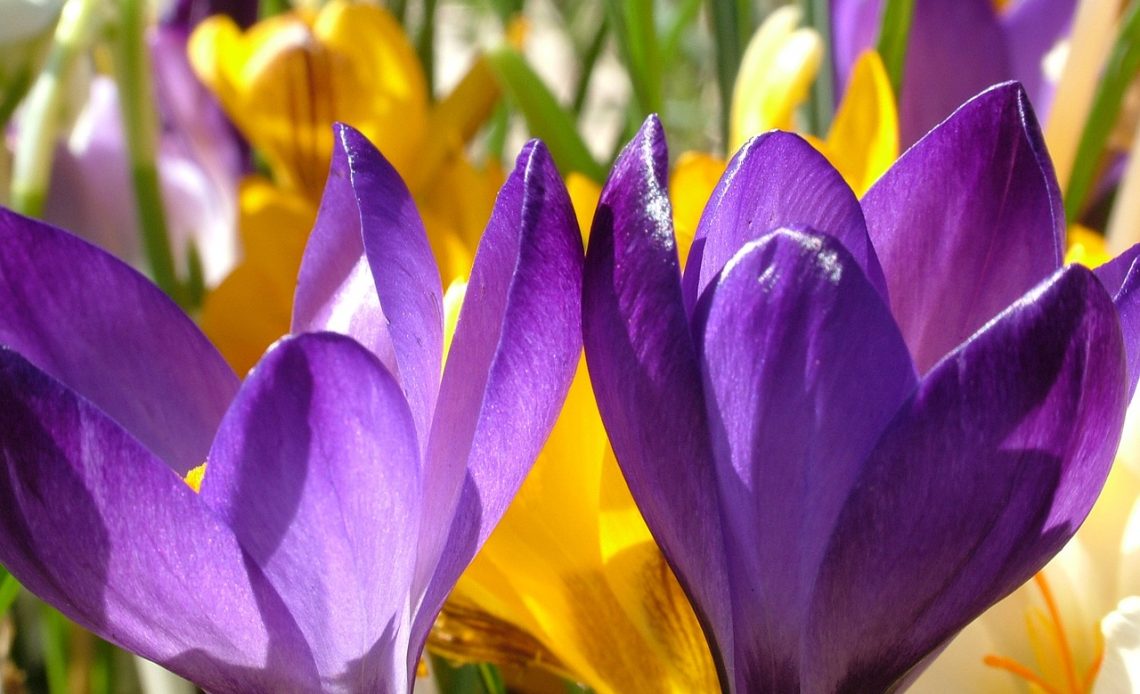
The violet flower holds a rich tapestry of meanings and symbolism that have captivated cultures throughout history. From its representation in literature and art to its significance in different traditions, the violet has become a beloved and cherished flower. This article aims to delve into the depths of its symbolism, exploring its various meanings and cultural significance.
The violet has a long and storied history, dating back to ancient civilizations. It has been associated with royalty and nobility, often seen as a symbol of power and prestige. In different cultures, the violet has been linked to love, faithfulness, and spirituality. Its delicate beauty and vibrant colors have made it a popular subject in art, with artists utilizing the flower to convey a range of emotions and themes.
Through the exploration of literary references, we can uncover the profound impact of violets in works such as Shakespeare’s Hamlet and Charlotte Brontë’s Jane Eyre. These references contribute to the flower’s symbolism, adding layers of meaning and depth. Additionally, the color violet itself holds significance, representing royalty, spirituality, and creativity, further enhancing the symbolism of the violet flower.
Join us on this journey as we unravel the meanings and symbolism of the violet flower, delving into its historical significance, cultural symbolism, literary references, artistic depictions, and the power of its color. Discover the beauty and depth behind this remarkable flower and gain a deeper appreciation for its role in our world.
Historical Significance
The violet flower holds a rich historical significance that dates back to ancient civilizations. In ancient Greece, violets were associated with love and fertility, and they were often used in love potions and as symbols of affection. The Romans also held violets in high regard, using them in various religious ceremonies and associating them with their goddess Venus.
Throughout history, violets have been linked to royalty and nobility. In the Middle Ages, violets were a favorite flower of Queen Elizabeth I, who often wore them as a symbol of her royal status. Additionally, violets were a common motif in medieval tapestries and illuminated manuscripts, representing wealth and luxury.
Furthermore, violets have been mentioned in numerous historical texts and works of literature, further solidifying their importance. For example, in Geoffrey Chaucer’s “The Canterbury Tales,” violets are described as a symbol of faithfulness and fidelity. These references highlight the enduring significance of violets throughout different periods of history.
Cultural Symbolism
The violet flower holds significant cultural symbolism in various traditions and belief systems. In many cultures, the violet flowers that represent love, representing deep affection and romantic feelings. It is often associated with faithfulness and loyalty, making it a popular choice for bouquets and gifts exchanged between loved ones.
Furthermore, the violet has spiritual connotations in different traditions. It is often linked to spirituality, meditation, and inner peace. The flower’s delicate and calming scent is believed to promote relaxation and tranquility. In some belief systems, violets are even thought to have healing properties, both for physical ailments and emotional well-being.
Overall, the cultural symbolism of the violet flower encompasses themes of love, faithfulness, and spirituality, making it a cherished symbol in many societies. Its beauty and significance have inspired countless works of art, literature, and poetry throughout history.
Literary References
Delve into the rich literary references to violets, from Shakespeare’s plays to Charlotte Brontë’s novels. Throughout history, violets have been used as powerful symbols in literature, representing various themes and emotions. In Shakespeare’s play Hamlet, Ophelia famously distributes flowers to the characters, including violets, which symbolize faithfulness and loyalty. Similarly, in Charlotte Brontë’s Jane Eyre, the protagonist describes violets as a symbol of modesty and humility.
These literary references to violets contribute to the flower’s symbolism, adding depth and meaning to their representation. Violets are often used to convey themes of love, purity, and innocence. They serve as a metaphor for delicate beauty and evoke a sense of nostalgia and longing. The presence of violets in literature sparks the imagination of readers, inviting them to explore the hidden meanings and emotions associated with this enchanting flower.
Hamlet
Hamlet, one of William Shakespeare’s most famous plays, features a significant reference to violets. In Act IV, Scene V, Ophelia, who has gone mad, hands out flowers to the characters around her, each representing a different meaning. When she gives a violet to Laertes, she says, “I would give you some violets, but they withered all when my father died.” This line suggests that violets symbolize grief and mourning in the context of the play.
The mention of violets in Hamlet adds depth to the play’s themes of death, loss, and sorrow. It reflects the emotional turmoil experienced by the characters, particularly Ophelia, who is grieving the loss of her father. The withered violets serve as a visual representation of the decay and despair that permeate the tragedy.
Artistic Depictions
Artists throughout history have been captivated by the beauty and symbolism of violets, and as a result, the flower has been featured in numerous works of art. From classical paintings to contemporary pieces, violets have been utilized by artists to convey a wide range of emotions and themes.
In classical paintings, violets are often depicted as a symbol of modesty and humility. Artists use delicate brushstrokes and soft colors to capture the gentle nature of the flower. These paintings evoke a sense of tranquility and serenity, inviting viewers to contemplate the beauty of nature.
In contrast, contemporary artists have taken a more abstract approach when portraying violets. They experiment with bold colors and unconventional techniques to express a variety of emotions. Violets can represent love, innocence, or even mystery, depending on the artist’s interpretation.
Furthermore, violets have been used as a symbol of femininity and beauty in many artworks. The delicate petals and vibrant colors of the flower are often associated with the feminine essence, and artists use violets to celebrate the grace and elegance of women.
Overall, the artistic depictions of violets showcase the versatility and symbolism of this beautiful flower. Whether it is a classical painting or a contemporary masterpiece, artists have successfully conveyed different emotions and themes through the portrayal of violets.
Color Symbolism
The color symbolism of violet is rich and multifaceted, adding depth to the symbolism of the violet flower. Violet is often associated with royalty, as it was historically a color worn by monarchs and nobility. This regal connection gives the violet flower a sense of elegance and prestige.
In addition to royalty, violet is also linked to spirituality. The color has long been associated with mysticism and the divine, representing spiritual enlightenment and higher consciousness. This spiritual aspect adds a layer of depth to the symbolism of the violet flower, suggesting a connection to the transcendent.
Violet is also a color that sparks creativity and imagination. It is often associated with artists and poets, as it is seen as a color that inspires and stimulates the mind. This creative energy enhances the symbolism of the violet flower, suggesting that it is a flower of inspiration and artistic expression.
Frequently Asked Questions
- What is the meaning of the violet flower?The violet flower holds various meanings depending on the culture and context. It is often associated with love, faithfulness, and spirituality. In different traditions, it can symbolize modesty, humility, or even mourning. Its significance can also vary in literature and art, where it may represent beauty, fragility, or hidden depths.
- What is the historical significance of violets?Violets have a rich historical importance. They were used in ancient civilizations for medicinal purposes and were associated with love and fertility. In medieval times, violets became a symbol of nobility and were used in royal ceremonies. Their delicate beauty and fragrance have captivated people throughout history, making them a cherished flower.
- How are violets portrayed in literature?Violets have been referenced in numerous literary works, including Shakespeare’s Hamlet and Brontë’s Jane Eyre. These references often add depth and symbolism to the story. Violets can represent innocence, purity, or even secrecy. They are used to convey emotions, enhance character development, and create a sense of beauty and enchantment.
- What role do violets play in art?Violets have been depicted in art for centuries. From classical paintings to contemporary works, artists have utilized violets to evoke different emotions and themes. They can symbolize love, femininity, or the fleeting nature of beauty. Violets in art often serve as a visual metaphor, inviting viewers to contemplate the hidden meanings and narratives behind the delicate flower.
- What does the color violet symbolize?The color violet itself carries symbolism of royalty, spirituality, and creativity. It is associated with power, luxury, and mysticism. When combined with the violet flower, the color enhances its symbolism and adds layers of meaning. The vibrant hue of violets can evoke feelings of enchantment, inspiration, and transcendence.

